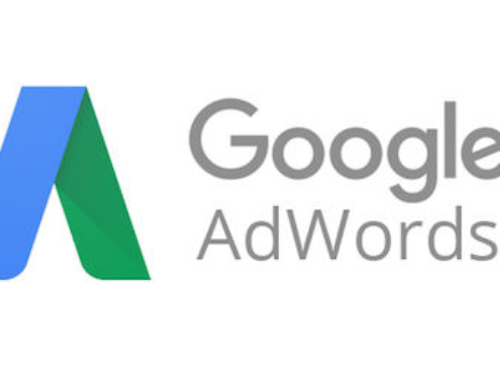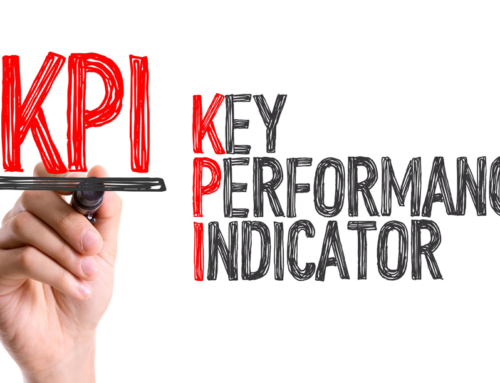The Question is a Common One
When we engage with a client who is new to paid search or as they become more comfortable with Adwords, the question about CTR (click through rates) and other performance metrics will  eventually come up. If you’ve asked that question, you’re not alone. In fact, in 2018 on average 1300 people worldwide ask Google “What is a good CTR?” every month. This question is a sensible question and looking for some sort of performance benchmark is reasonable. But, using benchmark data to grade your own performance isn’t always going to provide the simple answer and I’ll get into those reasons as we go along.
eventually come up. If you’ve asked that question, you’re not alone. In fact, in 2018 on average 1300 people worldwide ask Google “What is a good CTR?” every month. This question is a sensible question and looking for some sort of performance benchmark is reasonable. But, using benchmark data to grade your own performance isn’t always going to provide the simple answer and I’ll get into those reasons as we go along.
For now, you’ll be happy to know that benchmark data does indeed exist. While Google itself does not usually release benchmark numbers, several large companies conduct their own studies using client data to arrive at benchmarks. Such as the numbers well look at from Wordstream. So as we look at these benchmark numbers, I want to stress that these numbers aren’t coming directly from Google.
What Are We Looking At?
What I’ll cover are benchmark performance metrics for both Search and Display advertising using Google Ads (formerly Adwords). This is an important distinction because within Google Ads we’re actually dealing with multiple channels. Search, Display and YouTube.
The numbers provided below present search (commonly referred to as Adwords) and Display (often referred to as banner ads, although that’s increasing inaccurate as Google continues to enhance their display advertising product well beyond basic banners). But even understanding the distinction between search and display is to understand that they are not equal. Search is intended to get your ad in front of someone that’s actively searching for something, referred to as “In Market”, while display allows you to get your ad in front of someone that may meet some defined targeting parameters or that may have searched for something in the past, visited certain websites or otherwise exhibited some online behavior that allows us to conclude that they may be a desired target for an ad.
If you’re familiar with display advertising using Adwords you may have noticed that I did not mention Remarketing/Retargeting with display ads. You’re correct, I didn’t. That’s because within the context of benchmark data and trying to compare apples to apples, remarketing/retargeting would need to be set aside for the purposes of this review.
Before we get into the data, lets review a few other things about paid search and display.
Paid search is a real-time auction and bidding is based on a cost per click (CPC) while display is also auction based advertising but is typically on a cost per impression (CPM) basis. With paid search, you bid for position while display is simply a win or lose auction. If you don’t win the auction in display, you’re ad does not get shown in that auction. But with paid search, your ad can show up in multiple ad positions based on bidding. While you stand a much better chance of winning the click in a top search position, you could also earn a click in a lower position (lower bid) if you have well written and relevant ad copy.
The last item I want to cover about this data before we get into the numbers is that the benchmarks are presented by grouping advertisers in industry sectors. This presents another reason to view benchmark data as a rough guide and not an absolute standard. The industry sectors are pretty broad and the performance between two advertisers can be starkly different for a multitude of reasons. Offer, audience and targeting, direct competition (because it’s an auction), sales cycles and price are just some factors that can result in widely varying performance metrics between individual advertisers within any single industry sector as they’re presented in this data.
Lets Start with Average CPCs (cost per click)
CPC is the advertisers cost (within a specific auction) to win or earn the click. As I mentioned above, for paid search you’re participating in an auction but only pay if you win the click, not for the impression. While in display, you’re bidding to win the impression. The impression can still earn the click, but you’ll be charged based on the impression and not the click.

Source: Wordstream Google Ads Industry Benchmarks 2019
Many of the group sectors paid less for their clicks than the overall average, including apparel ($1.38), arts & entertainment ($1.47), hobbies & leisure ($1.68), jobs & education ($2.24), real estate ($2.27), retailers & general stores ($2.16), sports & fitness ($1.46), travel & tourism ($1.42), and vehicles ($2.03).
Advertisers that fall into the Law & government group are clearly the exception because their ad clicks cost the most at $6.35 per click.
Law & government are tied for the most expensive for display advertising as well, right next to finance, both costing $0.81 per click. However, most industries have relatively inexpensive CPCs on the Display Network. Apparel, arts & entertainment, and jobs & education, for example, all fall below $0.50 per click.
Average CTR (click through rate)
Simply put, its the ratio of clicks to impressions. Here again, consideration needs to be given to a wide variety of factors when looking at benchmarks and how they relate to your search and/or display advertising. Ad copy, relevance of the ad to your targeted audience (at the moment of the impression) and the clarity of your offer are just a few of the considerations.

Source: Wordstream Google Ads Industry Benchmarks 2019
Average CTR across all industries is 5.06% for search, with a high of 7.83% in the travel & tourism industry, and a low of 3.27% for law & government. Other industries with high search CTR benchmarks include vehicles (7.35%), dining & nightlife (6.63%), and real estate (6.19%). On the lower end of the scale is law & government and computers & computer electronics (3.49%) and finance (3.58%).
For Display advertising the average CTR across all industries was only 0.50%, with business & industrial having a high of 0.64%, and health with the lowest at 0.37%. But keep clicks via display advertising in perspective.
When thinking about search ads, if someone is actively searching for something, the only real objective of the ad is to present them with the right ad at the right time to encourage the click (which serves as an intent based micro-conversion) to begin a purchase journey. This is all part of creating a good pre-click experience with good ad copy and targeting. But without a good pre-click experience, winning the click and obtaining a good CTR becomes much much harder.
While it’s the efforts put into the pre-click experience that drives a good CTR, the last benchmark we’ll look at is actually a lesser ad/ad channel related data-point since it’s influenced more by the post-click experience. This is, of course, the conversion rate.
Average CR (conversion rate)
Conversion rate is the rate at which clicks resulted in completion of the desired outcome or whatever you’ve defined as a conversion. For an eCommerce business this may be as straightforward as how many clicks it took to result in someone completing a purchase. But depending on the industry or business, a conversion can be a phone call, form submission to download some content that places the visitor in a CRM as a lead for further follow-up, live chat engagement on your website, just to name a few.

Conversion rate by industry showed a lot of diversity in range. While the average rate across all industries was 4.40% for search and 0.57% for display, the outliers were extreme.
For example, while a majority of the industries fall between 4.0% and 5.0% on the Search Network, both law & government (7.45%) and vehicles (7.98%) saw the highest conversion rates.
In contrast,Display has significantly lower conversion rates. The highest GDN conversion rate (1.12% for hobbies & leisure) doesn’t reach the lowest Search Network conversion rate (2.77% for apparel). But we frequently set this as an expectation any time we consult with a client before they engage in display advertising. Display is not a strong conversion channel nor should it be expected to. It’s a cost effective awareness and consideration channel and should be approached from that angle.
Although we can look at Conversion Rates as a campaign metric, you will remember that I stated the this is really a lesser campaign metric because its equally, if not more, impacted by the post-click experience. But what do I mean by that? Well, you could could target just right people and have the best and most relevant ad copy that gets a great CTR, but if they don’t find what they expected once they click through to your website or if what they find there does not provide a good experience, they will leave without converting. In turn, driving down your conversion rate. This is where paying attention to the post-click experience becomes as important to your paid campaigns as the entire pre-click experience. Or, in other terms, you can lead that horse to the water but…
So Now you Have the Numbers
Now you have the overall benchmarks, by industry, for average Cost Per Click (CPC), Average Click through Rate (CTR) and Average Conversion Rate (CR). You can now look at your own campaigns to get an idea if you’re in the ballpark. While you’re performance will likely vary from the benchmarks, it can still give you an idea if you’re going in the right direction. More importantly, this may have introduced you to these performance metrics.
In fact, you’ll likely see variations in these metrics between your own campaigns and ad-groups so use your own data to begin formulating your own benchmarks. Maybe your business will find that it’s impacted by seasonality or some other factor that cannot be captured in broad sweeping benchmark data.
I also introduced you to the concept of the pre-click and post-click experience and I’ll probably cover this is greater detail in the future. Most emphasis is usually put on the pre-click experience and, in turn, much of the expectation is put on the pre-click experience to carry the weight of you’re paid advertising efforts. But even if you can win the click at a great CPC and CTR, if your visitor’s experience is not met once they click and arrive at your website or wherever you’re sending them via your ad, it’s unlikely you’ll achieve a good conversion rates. The additional downside to this is that the impact can be exponential. Meaning, if a visitor clicks once and has a bad experience, winning them back or getting them to click again may be infinity more difficult.



